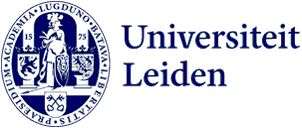
The whole world knows the way to the Leiden institute in Morocco
A delegation from Leiden University visited the Netherlands Institute Morocco (Nimar) in Rabat at the end of February. For a whole host of disciplines, this Leiden institute with a national mission is an important hub for collaboration with Morocco and Africa. The delegation met students, researchers and authorities. Everyone knows the way to Nimar.

Nimar is housed in a white building among the palm trees in Rabat, the Moroccan capital. The Dutch drizzle seems to have travelled with the delegation to the otherwise dry and sunny Morocco. Inside students are practising their Arabic and working on their research, and researchers are meeting one another. And they are not thin on the ground. Because it’s not just students and institutions from all over the Netherlands and Morocco who come to Rabat, but also students, PhD candidates and researchers from other European, African and Asian countries. Nimar not only facilitates research and teaching but also serves as an expertise centre. ‘We are a Leiden institute but we work with the whole world’, says Léon Buskens, Nimar director and Professor of Law and Culture in Islamic Societies.
Four centuries of ties
The ties between the Netherlands and Morocco go back over four hundred centuries. In 1605, the Netherlands was the first European power to establish diplomatic relations with Morocco. This long-standing relationship is still evident today. In the 400,000-strong community in the Netherlands with Moroccan roots, for example. And in the many interests the two countries share in terms of trade, culture, migration, security and sustainable development.
‘Nimar is part of that long history’, says Annetje Ottow, President of the Executive Board. It is unique that we at Leiden University can strengthen that relationship with our research and teaching. We share our knowledge and, vice versa, can learn a lot from Morocco and other African countries. This is a fantastic opportunity for all educational institutions that make use of Nimar.’
Bridge between Europe and Africa
Morocco sees itself not only as a gateway for Europe to the rest of Africa but also as a bridge from Africa to Europe. ‘The beauty of Nimar is that from Rabat, they can see how Morocco is positioning itself’, says Marleen Dekker, Professor of Inclusive Development in Africa and Director of the African Studies Centre Leiden. ‘We need to appreciate how we in the Netherlands often have a Western perspective on Africa and the world, and that we can learn a lot from the African perspective. The Nimar library is a good example of this.’ Nimar collects cultural and academic productions from Morocco and sends them to the University Libraries Leiden, which makes them available to a wide public.
Teaching in Rabat
One floor below the Nimar library, Middle Eastern Studies students are having an Arabic lesson. Two students say they are learning much more in Rabat than from their classes alone. ‘The excursions we take really stand out’, says Hasan. ‘Then you see the history you’ve learned about. You can’t reproduce such an experience in the Netherlands.’
His fellow student Nassreddin is surprised by all the speakers Nimar invites. ‘A politician recently came who is very critical of the regime and today the adviser to the king, André Azoulay, is coming to talk to us.’ Azoulay spoke to students from Nimar and the Dutch delegation about Moroccan policy and how Muslims, Jews and Christians live together in Morocco.
-
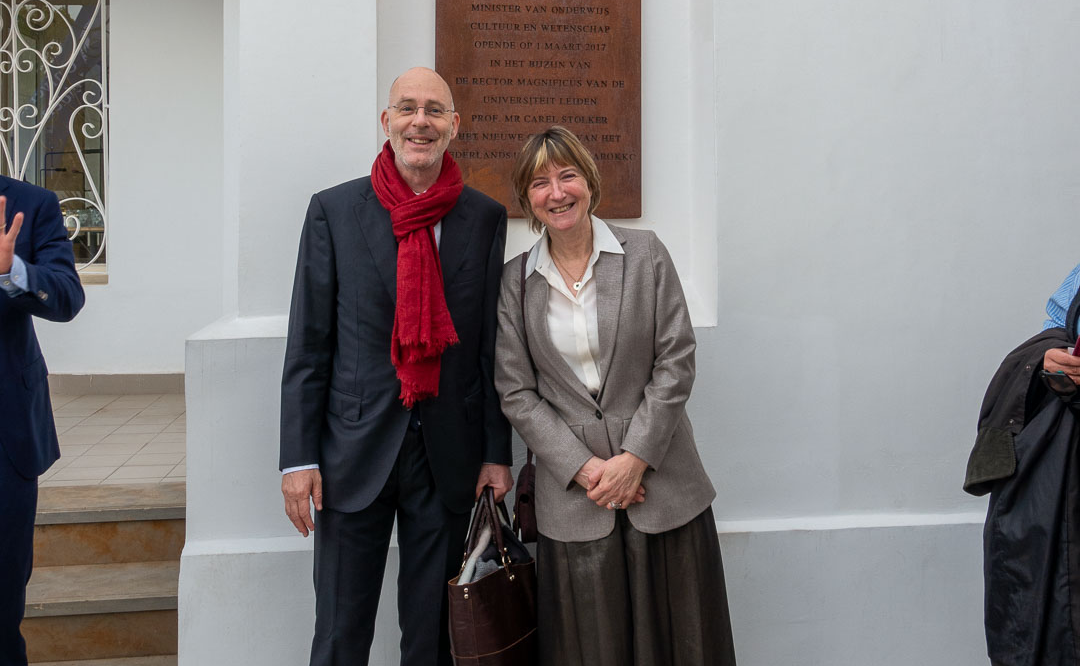
Léon Buskens (Nimar director) and Annetje Ottow (President of the Executive Board). -
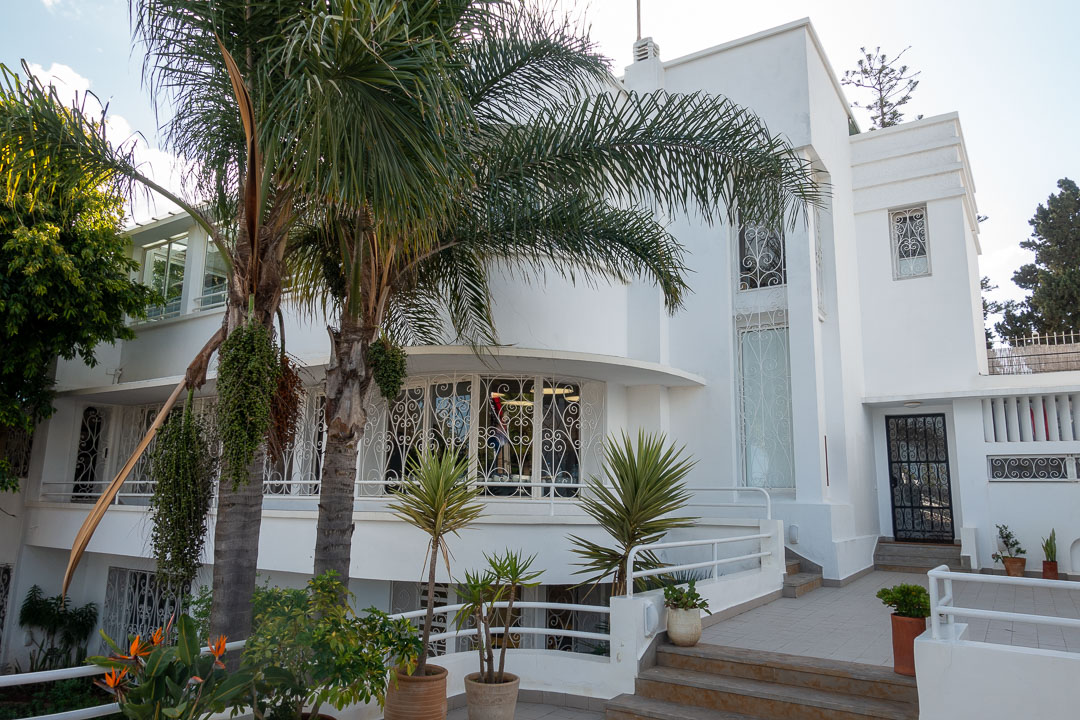
Nimar is housed in a white building among the palm trees in Rabat, the Moroccan capital.
Wrong impression of Morocco
Several lecturers say that students learn an incredible amount just by spending time in Rabat. ‘They are in a totally different cultural and religious environment’, says Nadia Bouras. She is a Nimar representative in Leiden and an assistant professor at the Institute for History, where the subjects she teaches include Moroccan history including migration history. Students often have the wrong impression of Morocco, she says. ‘They think it is a desert and very rural. They usually don’t know there are modern cities too. As we also have close ties with Moroccan universities, the Dutch students also meet peers who do not have the privilege of studying abroad, simply because they can’t get a visa. This alone makes an experience abroad of huge benefit to not only your personal development but also your academic learning.’
Making connections
During the visit, several researchers presented their research and explained Nimar’s role in this. One of them was Janna Houwen, an assistant professor at the Leiden University Centre for the Arts in Society (LUCAS), who is researching film and migration. ‘Migration is usually studied as something in which people are in motion but there are moments when people are not moving at all. For instance, people from Sub-Saharan Africa who are stranded in Morocco but also Moroccans who have stayed behind while their families have gone abroad.’
These groups that are not in motion film a lot about their lives and their community. In a two-year fellowship, Howen is researching documentaries with an autobiographical element. ‘It’s quite difficult to go to Morocco and meet people if you don’t have any connections. Thanks to Nimar I’ve already been to lots of universities, am meeting lots of people and am getting to know researchers and art institutions here. And they are helping me bring academics to the Netherlands and are supporting me in translating the films. I wouldn’t be able to do my research without Nimar.’
-

Researchers present their research to a roomful of Université Mohammed V students. Leiden Universities has several agreements with this Moroccan university. -
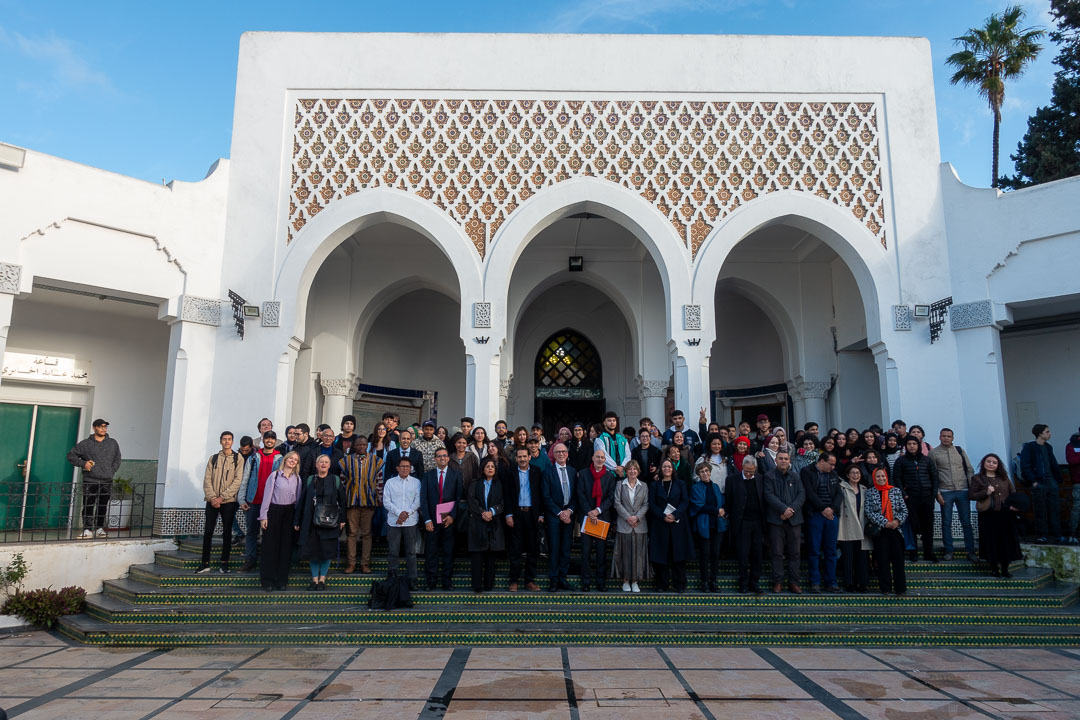
The delegation with students and staff from Université Mohammed V. -
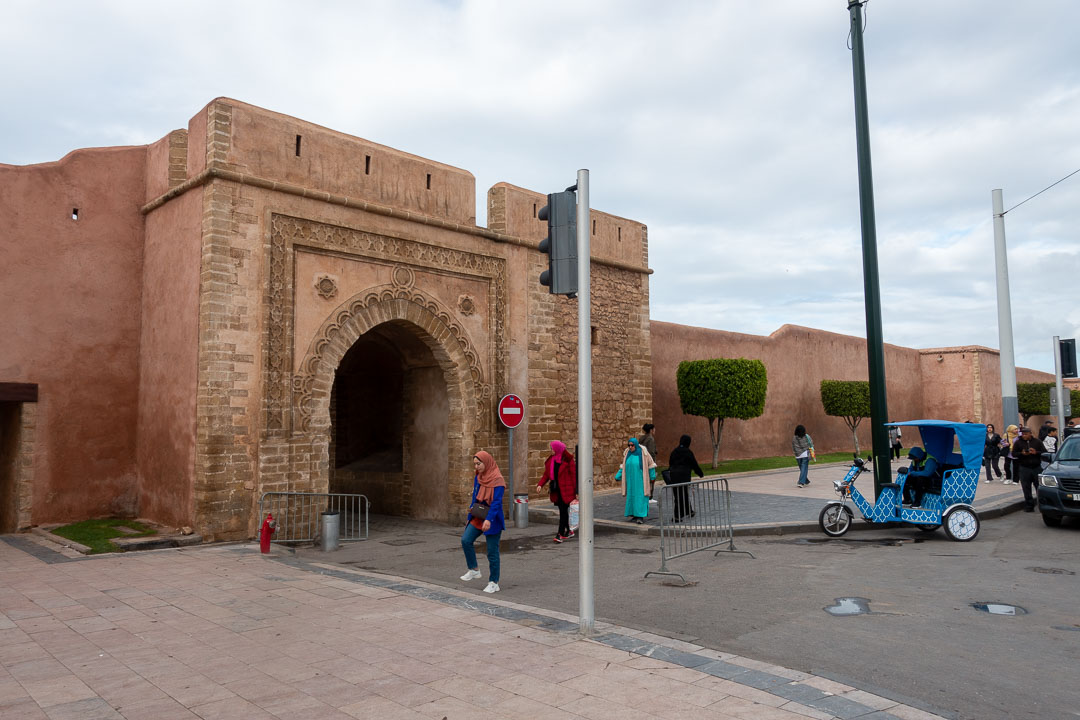
The centre of Rabat.
Leiden-Delft-Erasmus
Two other studies are being carried out within the Leiden-Delft-Erasmus alliance (LDE, Leiden University, Erasmus University Rotterdam and Delft University of Technology). In the Sea-ing Africa: Tracing Legacies and Engaging Future Promises of ‘Big’ Infrastructure Projects in Port City Regions in Ghana and Morocco project, LDE is working with researchers from Ghana and with various Moroccan institutions. They are researching the prominence of infrastructure in ideas on development in Africa.
Other research by the Leiden-Delft-Erasmus alliance was discussed in a roundtable discussion. Together with local universities, the Dutch business community and Moroccan government institutions, LDE is working to make the Moroccan horticultural sector more sustainable. Peter van Bodegom, Professor of Environmental Biology and Circular International Horticulture Systems, says, ‘It’s wonderful to do this research within LDE. We can combine expertise in chain and network collaboration from Rotterdam with technological knowledge from Delft and knowledge about the environment and food security from Leiden.’
Nimar also plays an important role in the research, says Van Bodegom, because it means the universities have a location in Morocco. ‘It makes it easier to organise meetings, invite people and bring students along to Morocco.’
Other cultures and perspectives
After the visit, Ottow is impressed with everything the Leiden institute in Rabat makes possible. ‘Language, culture, innovation and teaching are a tremendously important way to build ties with other countries. And Nimar makes us a good medium for that. During our visit, I saw how the institute also plays an important role in international relations. Great examples of this include studying Islam with Indonesia and collaborating with Ghana on the development of port cities. This multidisciplinary approach is hugely important to us. It brings us closer to addressing and resolving complex global problems. In terms of internationalisation, it is also fantastic that our students can visit here and open up to other cultures and perspectives − and bring them home with them too.’
Text and photos: Dagmar Aarts
